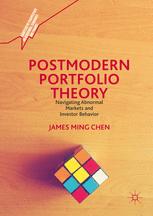

Most ebook files are in PDF format, so you can easily read them using various software such as Foxit Reader or directly on the Google Chrome browser.
Some ebook files are released by publishers in other formats such as .awz, .mobi, .epub, .fb2, etc. You may need to install specific software to read these formats on mobile/PC, such as Calibre.
Please read the tutorial at this link: https://ebookbell.com/faq
We offer FREE conversion to the popular formats you request; however, this may take some time. Therefore, right after payment, please email us, and we will try to provide the service as quickly as possible.
For some exceptional file formats or broken links (if any), please refrain from opening any disputes. Instead, email us first, and we will try to assist within a maximum of 6 hours.
EbookBell Team

4.3
48 reviewsThis survey of portfolio theory, from its modern origins through more sophisticated, “postmodern” incarnations, evaluates portfolio risk according to the first four moments of any statistical distribution: mean, variance, skewness, and excess kurtosis. In pursuit of financial models that more accurately describe abnormal markets and investor psychology, this book bifurcates beta on either side of mean returns. It then evaluates this traditional risk measure according to its relative volatility and correlation components. After specifying a four-moment capital asset pricing model, this book devotes special attention to measures of market risk in global banking regulation. Despite the deficiencies of modern portfolio theory, contemporary finance continues to rest on mean-variance optimization and the two-moment capital asset pricing model. The term postmodern portfolio theory captures many of the advances in financial learning since the original articulation of modern portfolio theory. A comprehensive approach to financial risk management must address all aspects of portfolio theory, from the beautiful symmetries of modern portfolio theory to the disturbing behavioral insights and the vastly expanded mathematical arsenal of the postmodern critique. Mastery of postmodern portfolio theory’s quantitative tools and behavioral insights holds the key to the efficient frontier of risk management.